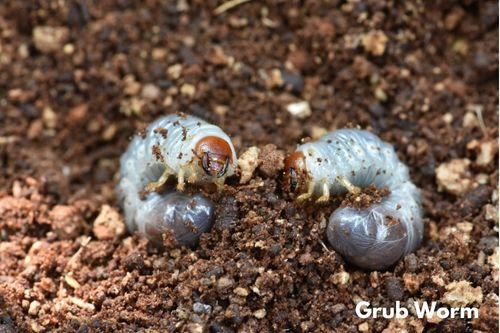
So, how deep do grub worms actually live in the soil? Imagine grubs like the foundations of a house. They’re not as visible as the walls or roof, but without a sturdy foundation, that house wouldn’t stand for long. Similarly, grub worms are crucial to maintaining soil structure and fertility. Let’s dig deep into their world and find out just how far they go below ground.
What Are Grub Worms?
Grub worms are the larvae of various beetles, most commonly the Japanese beetle, June bug, and chafer beetle. They look like C-shaped, white or cream-colored worms, and they’re typically about one inch long when fully grown. As they burrow through the soil, they feast on roots, decaying organic matter, and other nutrients.
You might be wondering why these little creatures get such a mixed reputation. While they can be beneficial for soil health, they can also be a nightmare for gardeners. If you have too many grubs, they can damage your grass and other plants by chewing on their roots. Understanding where and how deep they live can help you manage their populations effectively.
The Depth Grub Worms Typically Reach
Grub worms mostly live within the top 8 to 12 inches of soil. This is where they find the most food—roots and organic matter. Imagine it like a buffet for them! The top layer of soil is typically moist and full of nutrients, making it the perfect environment for their growth.
However, their depth can vary based on soil conditions and temperature. In sandy or loose soils, grubs might dig a bit deeper, while in compacted soil, they stay closer to the surface. Knowing this can help you identify potential grub issues in your yard.
Factors That Influence Grub Depth
Several factors can influence how deep grub worms live in the soil. These include:
- Soil Type: Grubs prefer loose, moisture-retaining soil where they can easily navigate and find food.
- Temperature: During colder months, grubs tend to burrow deeper to avoid freezing. They might hibernate below the frost line.
- Moisture Levels: If the top layer of soil dries out, grubs may move deeper in search of moisture.
Each of these elements plays a role in how grubs behave and where you might find them lurking. Understanding these factors can help you take action if you’re dealing with a grub problem!
How Grub Worms Affect Soil Health
Grub worms, despite their questionable reputation, do contribute positively to soil health. Here’s how they make a difference:
- Nutrient Recycling: As grubs feed on decaying matter, they help break it down, enriching the soil with nutrients.
- Soil Aeration: Their burrowing actions create channels in the soil, allowing air and water to penetrate more easily.
- Food Source: Grubs serve as a food source for birds and beneficial insects, creating a balanced ecosystem.
You might be wondering if the positives outweigh the negatives. While grubs can indeed damage plants, their overall contribution to soil health is essential, especially in a healthy garden ecosystem.
Signs of Grub Infestation
If you suspect that grubs are wreaking havoc in your garden, it pays to know the warning signs. Common indicators include:
- Brown Patches: Areas of grass that are turning brown may indicate root damage from grubs.
- Digging Animals: Raccoons, moles, and birds may come digging for grubs, indicating a larger population underground.
- Soft Spots: If you notice soft or spongy patches in your lawn, that’s a sign that roots are being eaten away.
By keeping an eye out for these symptoms, you’ll be able to catch any potential problems before they escalate too much.
Managing Grub Populations
Managing grub populations is key to maintaining a healthy garden. Here are some practical tips:
- Natural Predators: Encourage birds and beneficial insects, which can help keep grub numbers down.
- Soil Health: Improve soil quality with compost and organic matter, which helps plants withstand any grub damage.
- Timing Treatments: If you need to use pesticides, apply them when grubs are young and close to the surface, typically late summer to early fall.
Honesty, the best approach might be a combination of strategies. You want to balance the ecosystem in your yard while managing any grub populations effectively.
So, how deep do grub worms live in the soil? Generally, they reside within the top 8 to 12 inches of soil, influenced by various factors like soil type and temperature. While they can be problematic for gardeners, they also play a critical role in soil health. By understanding their behaviors and managing their populations thoughtfully, you can maintain a flourishing garden.
Next time you think about your lawn’s health, remember those tiny grub worms beneath the surface. They might be small, but they’re part of a larger, intricate system that helps your plants thrive. Happy gardening!
